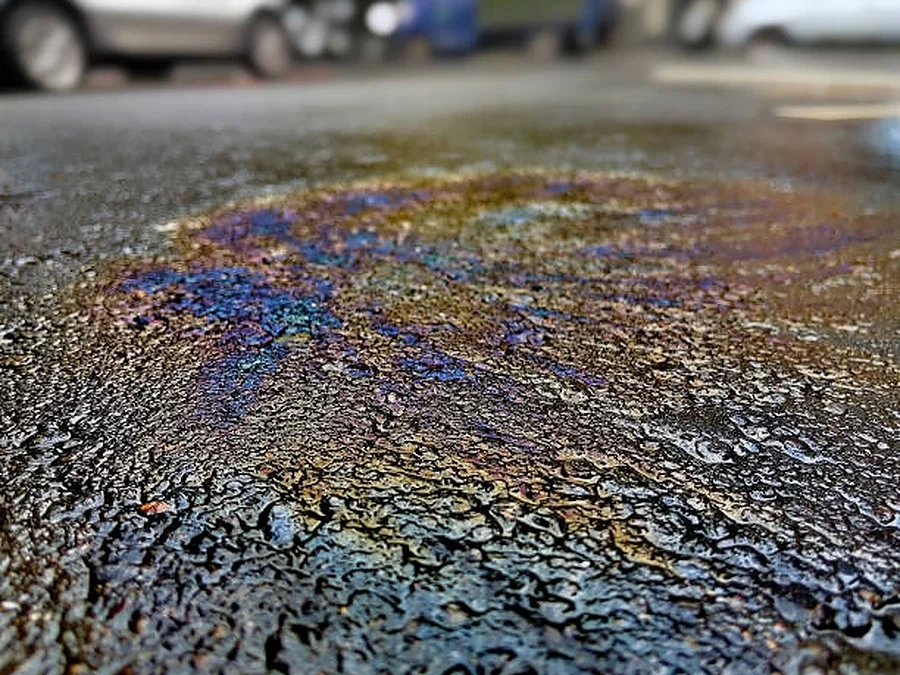Easy Actions for Effective Oil Spot Elimination From Lorry Surfaces
Reliable oil stain removal from lorry surface areas is critical for maintaining both visual appeals and worth. Comprehending the type of stain and the product influenced can substantially influence the cleaning process. By using the right strategies and materials, one can attain satisfactory results without compromising the honesty of the car's coating.
Assessing the Stain Kind
When dealing with oil tarnish elimination from cars, it is necessary to very first examine the sort of stain existing. Oil discolorations can vary substantially based upon their origin, age, and the surface they have penetrated. Common sources of oil stains include engine oil, transmission fluid, and even cooking oil, each having unique qualities that affect the removal process.
:strip_icc()/Remove-oil-stains-driveway-ed1d3c89a43b40e2af0bf0ee612ef5b5.jpg)
Furthermore, take into consideration the area of the stain. Strongsville Fleet Washing. Discolorations near the engine area may show a leakage, while those under the automobile can result from spills or drips. By accurately recognizing the discolor's origin and condition, lorry proprietors can pick the most efficient elimination methods, making sure effective outcomes without triggering further damages
Gathering Necessary Materials
Getting ready for oil tarnish elimination entails gathering the required materials to ensure a reliable and risk-free cleansing procedure. The right tools and materials can make the distinction in between an effective end result and more damages to your car's surface area.
Begin by getting absorptive products such as paper towels or dustcloths, which will help in blotting up excess oil. Dish soap watered down in warm water can serve as a mild choice for lighter discolorations.
A soft-bristle brush or sponge will certainly be required for applying the cleaning option without scratching the surface. Furthermore, rubber gloves need to be worn to safeguard your hands from severe chemicals, while safety goggles can safeguard your eyes from dashes.
Lastly, a pipe or stress washer is recommended for rinsing the area extensively after treatment. By constructing these supplies before beginning the cleaning process, you established the stage for efficient oil discolor elimination, making certain that the vehicle's outside continues to be unharmed while recovering its appearance.
Pre-Treatment Steps
With the necessary products constructed, the focus changes to the pre-treatment steps that will assist maximize the oil stain removal web link procedure. It is essential to identify the type of surface influenced by the oil tarnish, as various products might call for tailored methods. Tidy the area around the stain with water and moderate soap to eliminate any kind of dust or particles, which can prevent the efficiency of the tarnish elimination strategy
Next, examine the oil tarnish's age and deepness. Fresh discolorations commonly respond better to treatment than older ones, which might have passed through the surface more deeply. For older spots, take into consideration soaking the location lightly with an appropriate solvent, making sure that it does not harm the underlying product.
When the surface is prepared, blot the tarnish gently with a clean, dry cloth or paper towel to absorb excess oil. These pre-treatment steps lay the foundation for successful stain removal, setting the stage for the following phase of the procedure.
Cleaning Techniques to Use
Effective cleaning methods are essential for successfully getting rid of oil stains from lorries. Apply the degreaser generously to the tarnished area, ensuring it covers the oil place completely.
For tougher discolorations, think about using a combination of cooking soft drink and water to produce a paste. Apply this paste directly onto the tarnish and scrub with the brush, allowing the cooking soda to take in excess oil.
If the tarnish continues, duplicating the process may be necessary. Adhering to these techniques will ensure an extra efficient oil discolor removal, restoring your automobile's look.
Post-Cleaning Treatment Tips
After efficiently getting rid of oil discolorations from your automobile, carrying out appropriate post-cleaning care website link is important to maintain here its look and avoid future stains. Begin by using a high-quality wax or sealer to the affected location. This produces a protective barrier against environmental pollutants, consisting of oil. Normal waxing not just enhances the vehicle's sparkle however also makes succeeding cleansing much easier.
Following, consider car park your vehicle in shaded areas or utilizing a vehicle cover to minimize direct exposure to sunshine and severe climate conditions. This will certainly help maintain the integrity of the paint and lower the probability of future stains establishing in.
Furthermore, maintain a close eye on areas where oil leakages might occur, such as the engine area and undercarriage. Normal examinations can assist you identify prospective leakages prior to they become bothersome.
Conclusion

When dealing with oil discolor removal from vehicles, it is crucial to first evaluate the type of discolor present. Typical sources of oil discolorations consist of engine oil, transmission fluid, and even cooking oil, each having unique attributes that affect the elimination procedure.
Fresh oil spots normally show up darker and glossy, while older spots may be lighter and much more absorbed into the surface. Tidy the location around the stain with water and moderate soap to get rid of any dirt or particles, which can hinder the performance of the stain elimination strategy.
After efficiently removing oil spots from your car, applying correct post-cleaning care is vital to keep its look and protect against future stains.